In the seemingly ordinary world of insects, extraordinary and sometimes disturbing phenomena occur that rival the most imaginative science fiction narratives. Across forests, fields, and even urban environments, certain insects behave in ways that defy their natural programming – climbing to unusual heights, seeking out water when they normally avoid it, or exposing themselves to predators in inexplicable ways. Behind these bizarre behaviors lies not a random glitch in insect behavior, but the calculated manipulation of sophisticated parasites that hijack their hosts’ nervous systems. These “zombie bugs” represent one of nature’s most fascinating and unsettling examples of biological mind control, where parasites effectively reprogram their hosts’ brains to serve the parasite’s reproductive agenda, often at the cost of the host’s survival.
The Puppet Masters: An Overview of Mind-Controlling Parasites
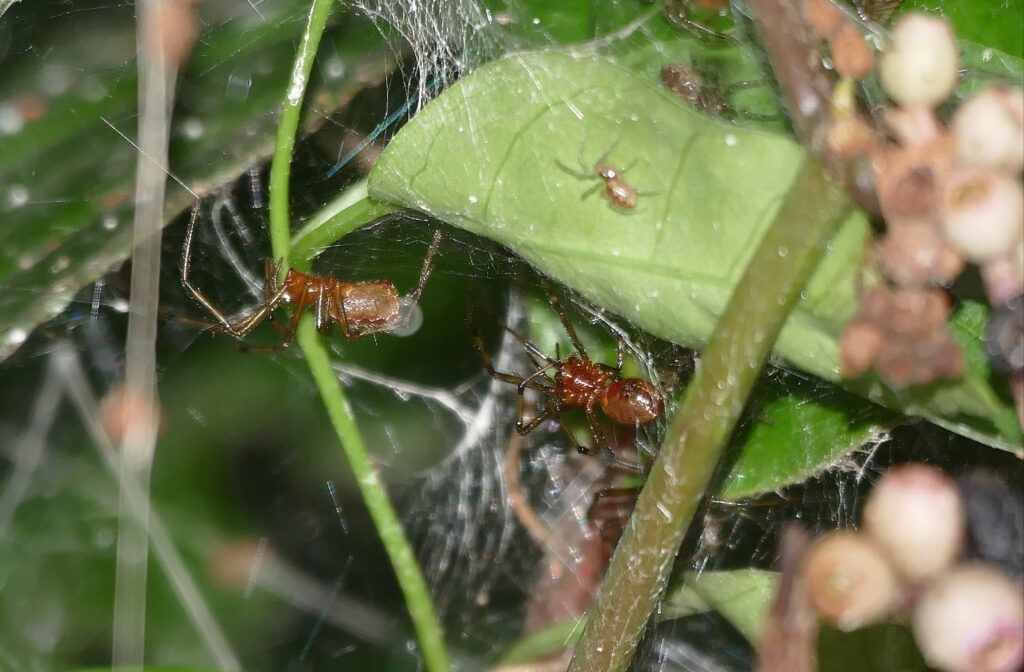
Mind-controlling parasites represent a specialized class of organisms that have evolved the remarkable ability to manipulate host behavior through complex biochemical and physical mechanisms. These parasites span multiple taxonomic groups, including fungi, protozoa, nematodes, and other insects, each employing unique strategies to commandeer their hosts’ central nervous systems. Their evolutionary success depends entirely on their ability to complete complex life cycles that often require moving from one host species to another. By manipulating their current host’s behavior, these parasites increase their chances of transmission to the next required host or create conditions optimal for their reproduction. This parasitic relationship represents an evolutionary arms race where the host’s defense mechanisms continuously evolve against the parasite’s increasingly sophisticated manipulation tactics, resulting in some of the most precise and targeted behavioral modifications observed in nature.
The Cordyceps Fungus: Nature’s Body-Snatchers
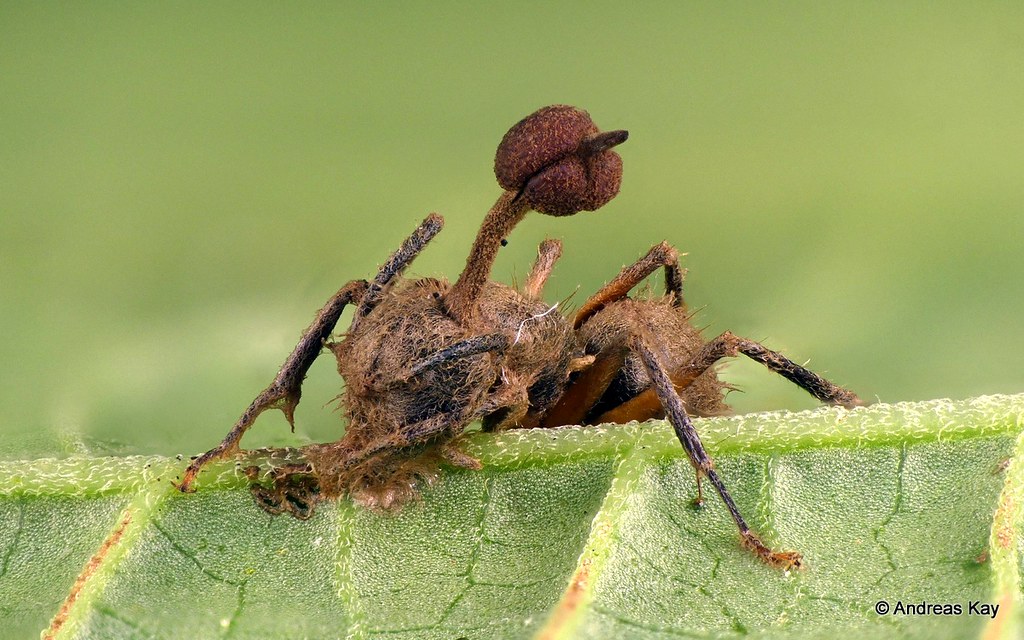
Perhaps the most visually striking example of parasitic mind control comes from the Cordyceps fungus, which has evolved species-specific relationships with various insects, most famously ants. When a Cordyceps spore attaches to an ant, it penetrates the exoskeleton and begins growing inside the host’s body, gradually spreading throughout its tissues while keeping vital systems intact. As the fungal network infiltrates the ant’s brain, it produces compounds that affect the host’s neurobiology, compelling infected ants to abandon their colonies and climb vegetation to a specific height with optimal temperature and humidity conditions for fungal reproduction. In a final macabre act, the ant bites down on a leaf vein or plant stem in what scientists call the “death grip,” securing its position as the fungus kills its host and erupts through the ant’s head, forming a spore-releasing stalk. These spores then rain down on the forest floor below, where they can infect new ant hosts, continuing the cycle of manipulation and reproduction that has been refined over millions of years of evolution.
Jewel Wasps and Their Cockroach Zombies
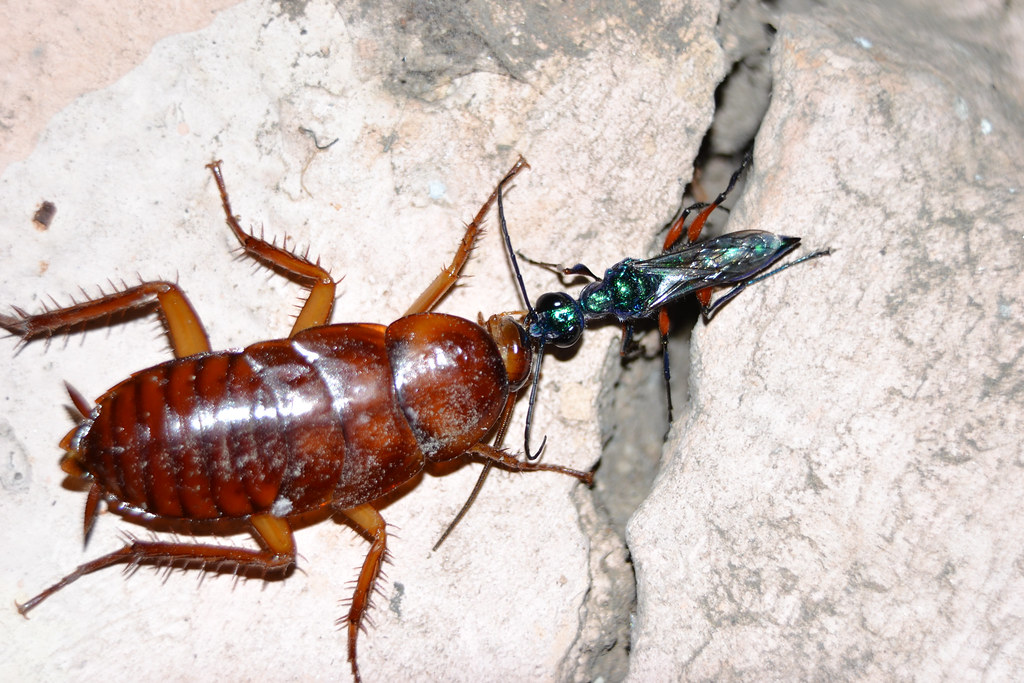
The emerald jewel wasp (Ampulex compressa) employs surgical precision in its manipulation of cockroach hosts that would impress even the most skilled neurosurgeons. The female wasp’s reproductive strategy begins with a precisely targeted sting to the cockroach’s thoracic ganglion, temporarily paralyzing its front legs to prevent defense. She then delivers a second, more remarkable sting directly into the cockroach’s brain, specifically targeting areas that control the escape response and voluntary movement. This sting delivers a cocktail of neurotoxins that doesn’t paralyze the cockroach but instead renders it compliant – essentially creating a living, docile zombie. The stupefied cockroach then allows the wasp to lead it by the antenna like a dog on a leash to the wasp’s burrow, where the wasp lays an egg on the cockroach’s abdomen before sealing it inside the chamber. When the wasp larva hatches, it consumes the still-living cockroach from the inside out, strategically eating non-essential organs first to keep its food source fresh until it’s ready to pupate and emerge as an adult wasp.
Horsehair Worms: The Suicidal Swimming Induction
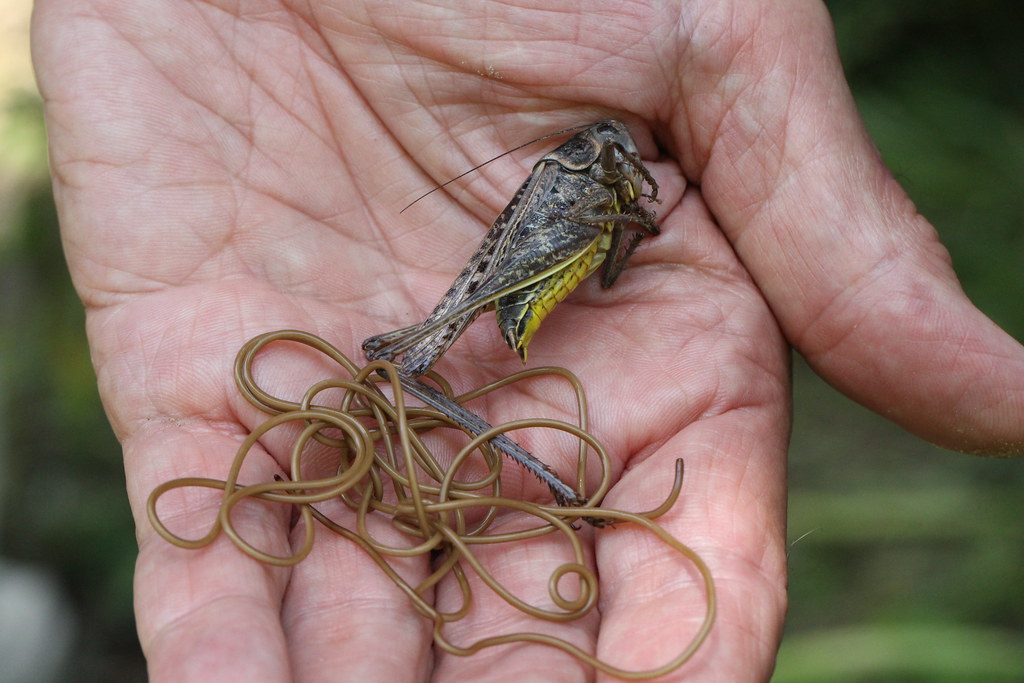
Horsehair worms (Nematomorpha) represent one of the most dramatic examples of host manipulation, compelling terrestrial insects to commit what amounts to suicide by drowning. These parasites begin their lifecycle when their eggs, laid in water, are ingested by aquatic insect larvae such as mosquitoes. These larvae are later eaten by terrestrial insects like crickets or grasshoppers, transferring the developing worm to its final host. Within this terrestrial host, the worm grows to an impressive length, often several times longer than its host when fully extended, coiling around the insect’s internal organs without damaging vital systems. When the worm reaches maturity, it produces proteins that affect the host’s central nervous system, specifically targeting neurochemical pathways related to water-seeking behavior. This manipulation compels the normally water-averse insect to seek out and jump into bodies of water, where the mature worm emerges from the host’s body through natural openings or by creating an exit wound. Once in water, the freed worms can mate and produce eggs, continuing their remarkable lifecycle while their host typically drowns – a dramatic example of a parasite prioritizing its reproduction over its host’s survival.
Toxoplasma gondii: Turning Fear into Fatal Attraction
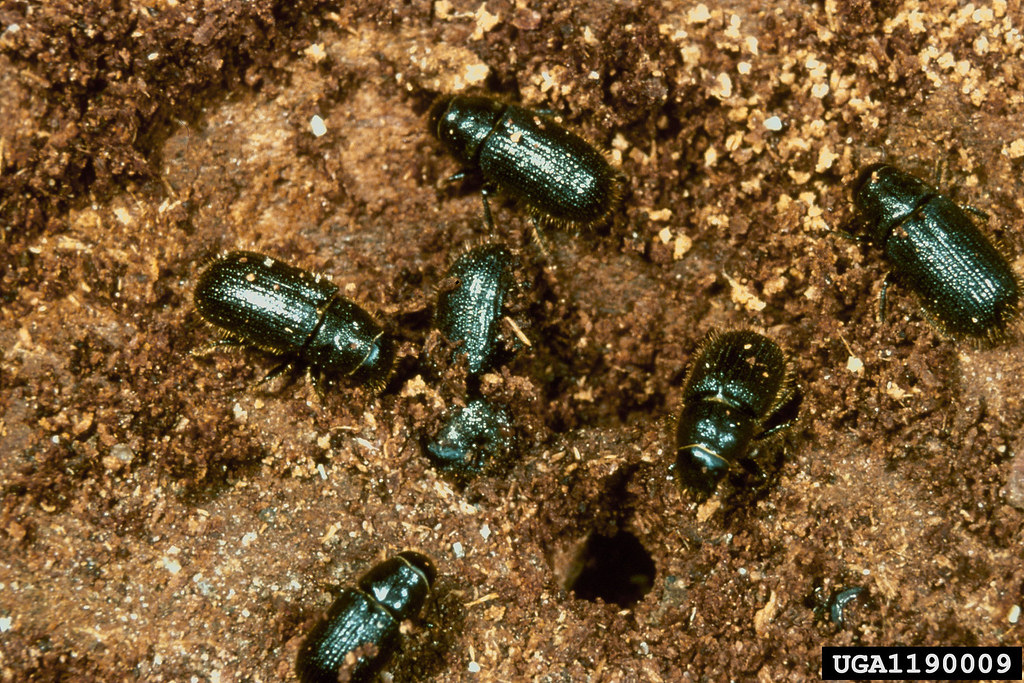
While primarily known for its effects on mammals, Toxoplasma gondii’s manipulative capabilities extend to certain insect hosts, offering insights into the broader mechanisms of parasitic mind control. This single-celled parasite has evolved a reproductive strategy that requires it to move from intermediate hosts to its definitive host – cats – where sexual reproduction occurs. In insects such as certain species of flies and beetles, T. gondii infection can alter natural aversion behaviors, making infected insects less likely to avoid predator cues and potentially more likely to be consumed by cats. The parasite accomplishes this behavioral manipulation through the production of enzymes that affect neurotransmitter levels in the host’s brain, particularly those related to fear responses and risk assessment. Studies have shown that these molecular mechanisms bear striking similarities to how the parasite manipulates rodent hosts, suggesting evolutionary conservation of manipulation strategies across different host taxa. This research into T. gondii’s effects on insect hosts provides valuable comparative models for understanding the broader neurological basis of parasitic behavioral manipulation across the animal kingdom.
Parasitic Wasps: Pharmacological Mind Control
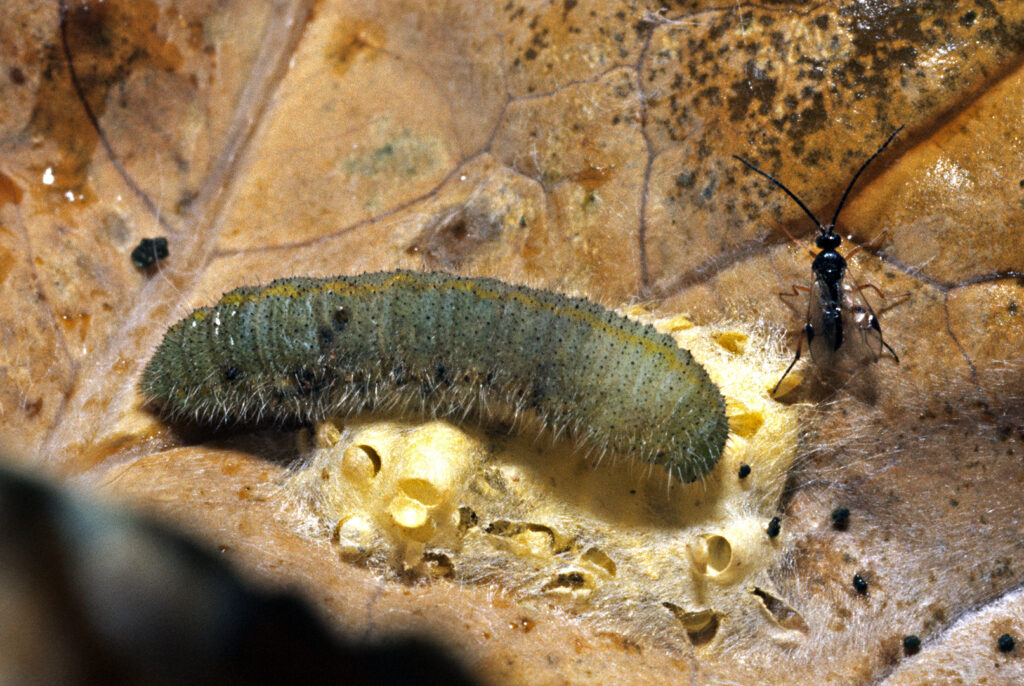
Beyond the jewel wasp, numerous other parasitic wasp species have evolved sophisticated chemical cocktails that transform their insect hosts into protective incubators for their offspring. Species like Cotesia glomerata inject their eggs along with a potent mix of venoms, viruses, and proteins into caterpillars, fundamentally altering the host’s immune response and behavior. Once the wasp larvae hatch inside the caterpillar, they feed on hemolymph and non-vital tissues while releasing chemicals that suppress the host’s natural molting process and modify its defensive behaviors. In many cases, infected caterpillars will actively protect the wasp cocoons after the larvae emerge to pupate externally, swinging their heads aggressively at approaching predators instead of focusing on their own recovery or escape. The pharmacological sophistication of these wasps is remarkable – they produce specific compounds that target particular neural pathways, essentially “drugging” their hosts into becoming bodyguards for the very parasites that will ultimately ensure their death. Research into these compounds has potential applications in neuropharmacology and pest control, as scientists work to understand how such precise behavioral manipulations are achieved at the molecular level.
Zombie Ants and the Ophiocordyceps Unilateralis Complex
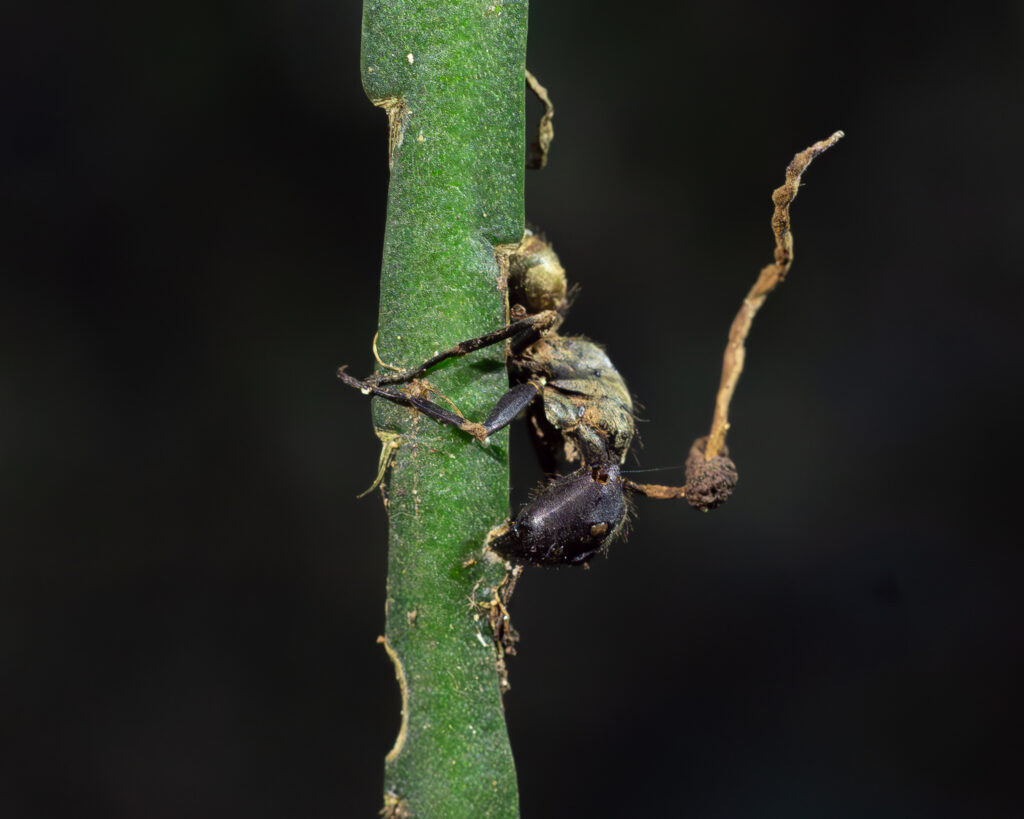
The relationship between carpenter ants and the Ophiocordyceps unilateralis fungal complex represents one of the most studied and sophisticated examples of behavioral hijacking in nature. This fungal parasite doesn’t simply cause random behavioral changes but induces a specific sequence of behaviors optimized for fungal reproduction. Infected ants exhibit what researchers call “summit disease,” leaving their colonies and climbing understory vegetation to a precise height where temperature and humidity conditions are ideal for fungal development. Even more remarkably, infected ants orient themselves on the north-northwest side of plants and bite down on leaves or stems with their mandibles in the characteristic “death grip,” always at a specific time of day that optimizes fungal spore dispersal. Recent research using 3D imaging and artificial intelligence has revealed that the fungus forms an extensive network throughout the ant’s body, with connections to muscle fibers but conspicuously avoiding direct infiltration of the brain. Instead, the fungus appears to form a complex interconnected network that surrounds the brain and effectively creates a “fungal brain” that controls the ant’s muscles directly – a biological puppeteer working the strings of its host with remarkable precision.
Nematodes: Tiny Worms with Powerful Control
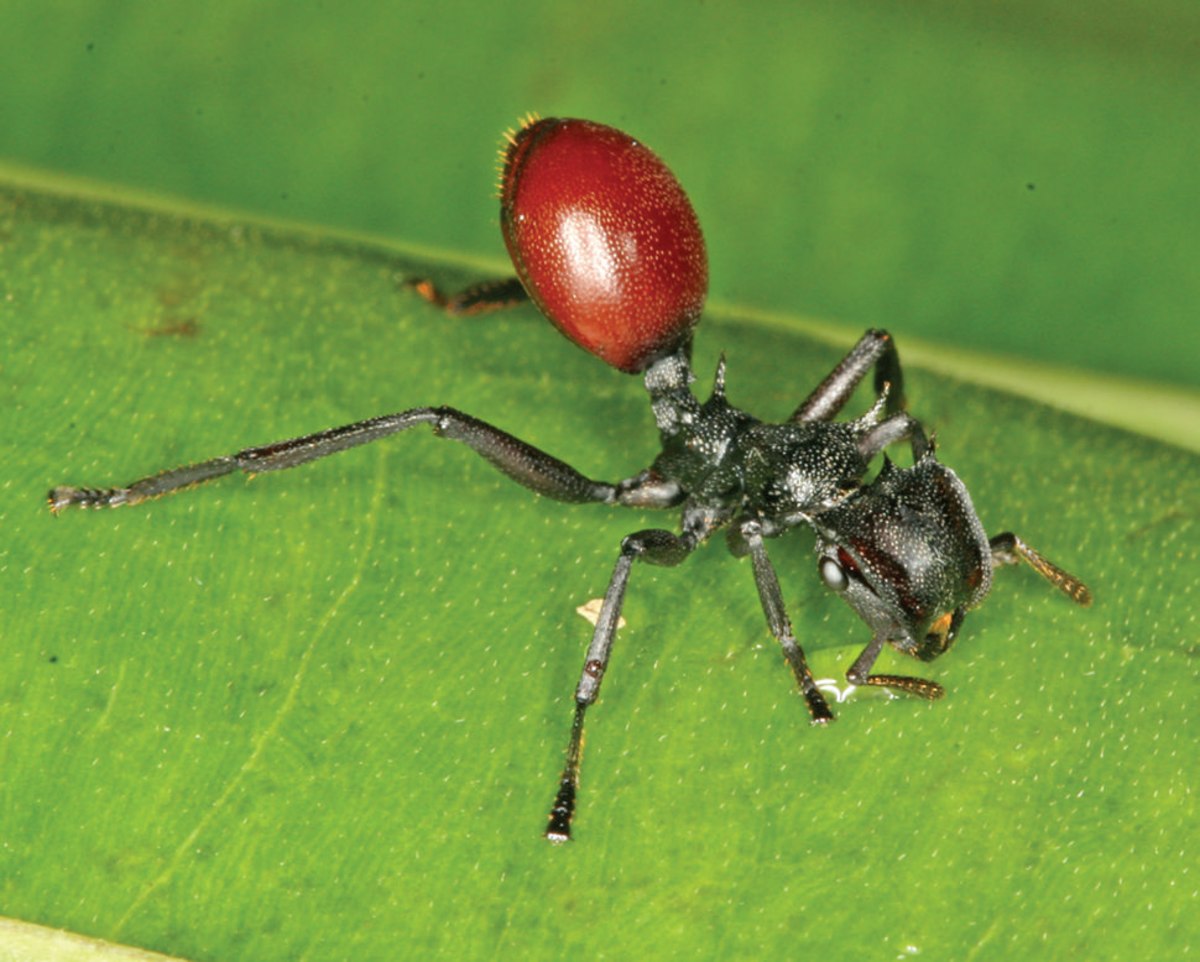
Nematode worms represent another diverse group of parasites capable of sophisticated host manipulation in the insect world. Various nematode species target different insect hosts, from ants to beetles to flies, each with specialized strategies for behavioral control. Phasmarhabditis hermaphrodita, for instance, infects slugs and snails, altering their behavior to favor moist environments where the nematodes can complete their lifecycle and find new hosts. In ant colonies, certain nematode parasites cause infected worker ants to develop swollen, bright red abdomens that resemble ripe berries, a condition called physogastry. These infected ants modify their behavior to elevate their abdomens prominently and remain motionless on vegetation, effectively mimicking berries that attract fruit-eating birds. When birds consume these “ant-berries,” they unwittingly ingest the nematodes, which can then be dispersed through bird droppings to infect new ant colonies. What makes nematode control particularly fascinating is their relatively simple nervous systems achieving such complex host manipulations, suggesting that even basic parasitic organisms can evolve sophisticated mechanisms to influence complex host behaviors through targeted biochemical interference.
The Molecular Mechanisms of Mind Control
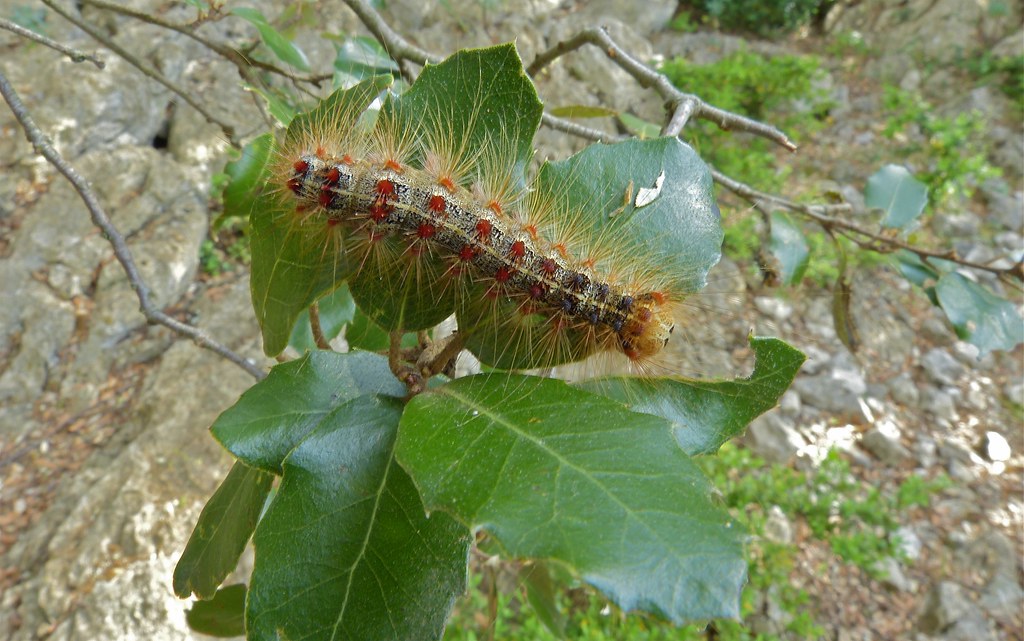
The precise methods by which parasites manipulate their hosts represent cutting-edge questions in neuroethology and parasitology. Research has revealed multiple pathways through which parasites achieve behavioral control, including direct secretion of neuromodulatory compounds that mimic or disrupt the host’s own neurotransmitters. Some parasites produce proteins that bind to specific neural receptors, effectively hijacking existing neural circuitry, while others release compounds that alter gene expression in the host’s brain, fundamentally changing how neural networks function. Certain fungal parasites like Ophiocordyceps secrete metabolites structurally similar to compounds involved in the host’s major behavioral pathways, essentially “speaking the neurochemical language” of their hosts. Advanced techniques including transcriptomics, proteomics, and metabolomics are allowing scientists to identify the specific molecules involved in these interactions, revealing that many parasites produce compounds targeting highly conserved neurological pathways related to fear, feeding, and reproductive behaviors. This research not only illuminates one of nature’s most fascinating evolutionary arms races but also offers potential applications in neuropharmacology, as many of these parasitic compounds represent novel neuroactive molecules with potential therapeutic applications.
Evolutionary Arms Race: Host Defenses vs. Parasite Manipulation
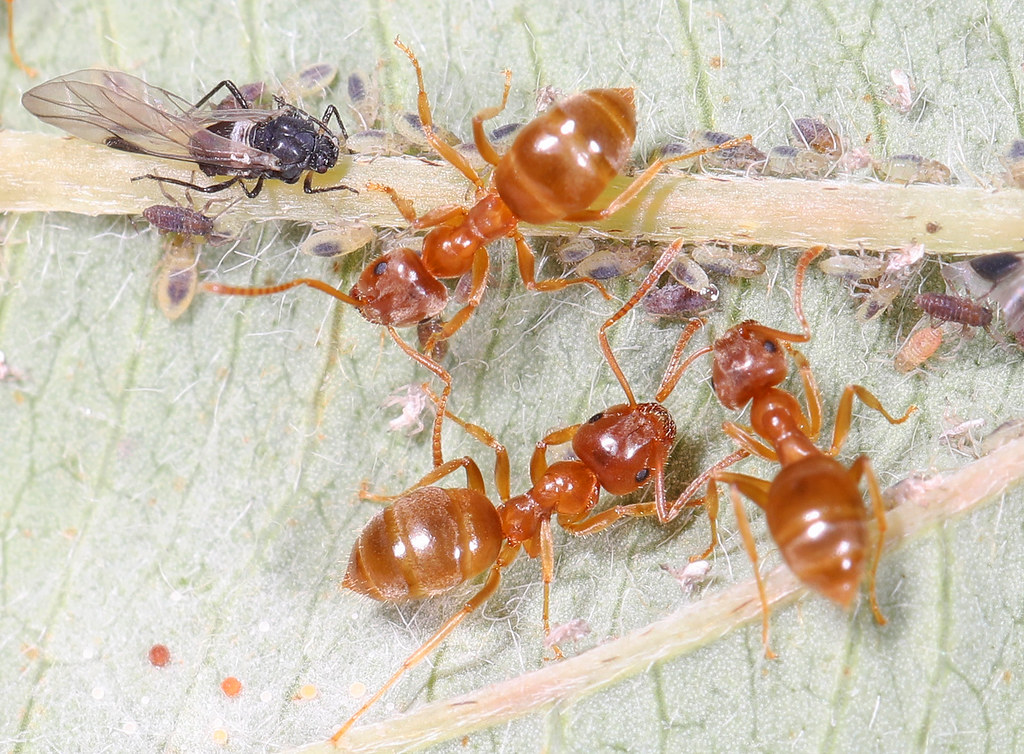
The relationship between mind-controlling parasites and their insect hosts represents a classic evolutionary arms race, with each adaptation by parasites met with counter-adaptations by hosts. Insects have evolved numerous defensive strategies against parasitic manipulation, including behavioral fever, where infected individuals deliberately seek higher temperatures to kill or inhibit parasite development. Social insects like ants and bees employ collective immunity strategies, such as grooming behaviors that remove fungal spores from nestmates or social isolation of infected individuals to prevent colony-wide outbreaks. Some insect species have evolved specific immune responses targeting the compounds parasites use for behavioral manipulation, essentially creating neurochemical “firewalls” against hijacking. Parasites, in turn, continuously evolve more sophisticated means of circumventing these defenses, including molecular mimicry of host compounds and strategies to suppress specific immune responses that might counter their manipulative efforts. This constant evolutionary pressure has driven remarkable specialization, with many parasites becoming highly host-specific, evolving manipulation tactics precisely tailored to the neural architecture and behavioral repertoire of their particular host species.
Ecological Importance of Mind-Controlling Parasites

Despite their seemingly gruesome nature, mind-controlling parasites play crucial roles in maintaining ecosystem health and biodiversity. By targeting specific host species, these parasites can function as natural population regulators, preventing any single insect species from becoming ecologically dominant. Research has shown that the removal of certain parasites from ecosystems can lead to dramatic population explosions of their former hosts, potentially triggering cascading effects throughout food webs. Additionally, many parasites with complex life cycles connect otherwise separate food chains, facilitating energy and nutrient transfer between different trophic levels and habitats. The behavioral changes induced by these parasites can also modify ecosystem engineering activities of their hosts – for example, altered burrowing behaviors in parasitized insects can affect soil aeration and nutrient cycling. Conservation biologists increasingly recognize that healthy ecosystems require their full complement of parasites, including those with mind-controlling capabilities, as these organisms have co-evolved with their hosts for millions of years and form an integral part of ecological communities.
Climate Change and the Future of Insect-Parasite Relationships

The delicate relationships between mind-controlling parasites and their insect hosts face unprecedented challenges in our rapidly changing climate. Many parasitic life cycles depend on precise environmental conditions and timing, which climate change is already disrupting through altered temperatures, precipitation patterns, and seasonal shifts. For parasites with multi-host life cycles, climate-driven changes in the geographic ranges and phenology of their different host species can create fatal mismatches in previously synchronized relationships. Ophiocordyceps fungi, for instance, require specific humidity and temperature conditions to develop properly and effectively disperse their spores – conditions that are becoming increasingly unpredictable in many forest ecosystems. Additionally, thermal stress can alter insect immune systems, potentially making them more or less susceptible to parasitic manipulation depending on the specific host-parasite pair. Research suggests that some parasites may adapt more quickly than their hosts to changing conditions, potentially leading to intensified manipulation effects and increased host mortality in certain systems, while other delicately co-evolved relationships may collapse entirely, with cascading effects throughout ecosystems.
Applications in Science and Medicine

The study of how parasites manipulate insect brains has yielded valuable insights with applications far beyond basic biology. Neuropharmacologists are studying the compounds produced by jewel wasps and certain fungi to develop targeted treatments for neurological disorders, as these parasites have essentially evolved natural libraries of neuroactive compounds that act with remarkable precision. Agricultural scientists are exploring how to harness or mimic these manipulation mechanisms to develop highly specific pest control methods that don’t rely on broad-spectrum insecticides. The protein secretions of certain parasitic wasps have revealed novel antimicrobial compounds with potential applications in fighting antibiotic-resistant infections. Additionally, the study of how parasites like Ophiocordyceps create complex networks that interface with host nervous systems is inspiring innovations in brain-machine interfaces and neural engineering. By understanding how nature has solved the challenge of precise neural control, researchers hope to develop better treatments for conditions ranging from Parkinson’s disease to depression, potentially turning these evolutionary horror stories into sources of healing.
Conclusion
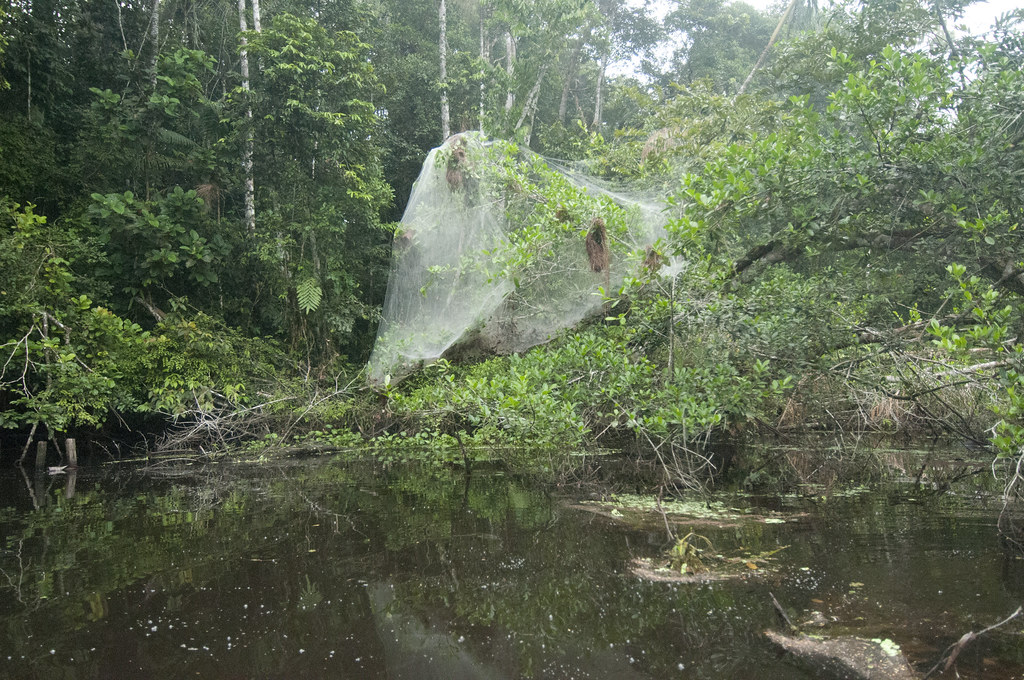
The phenomenon of zombie bugs represents one of nature’s most fascinating and unsettling evolutionary innovations. These parasitic relationships, refined over millions of years, reveal the remarkable biological complexity that can develop when organisms evolve in tight association. From fungi that turn ants into spore-dispersing platforms to wasps that perform precision neurosurgery on cockroaches, these relationships demonstrate the extraordinary adaptability of life. As we continue to study these systems, we gain not only fundamental insights into neurobiology, behavior, and evolution but also potential applications in medicine and technology. Perhaps most importantly, these mind-controlling parasites remind us that even the smallest organisms can evolve solutions to incredibly complex biological challenges, offering both humbling perspective on our place in nature and inspiration for addressing our own scientific and medical challenges.

